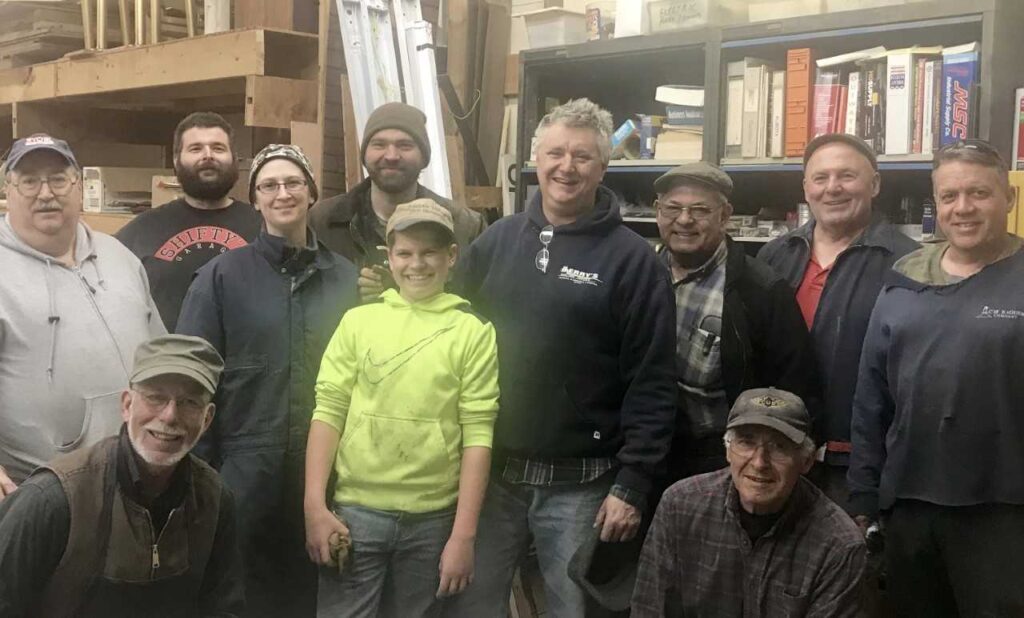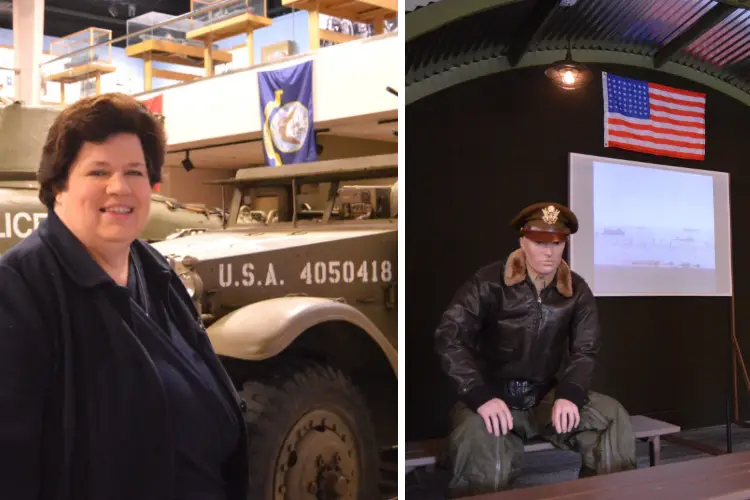At the Wright Museum of WWII in Wolfeboro, the military vehicles and tanks visitors see on display are not only awe-inspiring as visual testaments to a seminal period in American history, they are also operational.
“These working vehicles give the public a better understanding of what these men went through in war,” said Randy Cook, who serves on the museum’s board and heads the ‘Wright Mechanics.’
All of these “mechanics” either have full-time jobs or are retired individuals who simply want “to help out.”
“A few of the guys are trained mechanics, and a few are like me who just always had old cars and worked on them,” he said. “Some know nothing but help us anyway. We even have a woman on the team now, which is neat.”
With ages ranging from 17 to 70 or older, Wright Mechanics keep roughly 20 vehicles–all more than 70 years old–literally on the road. Out of these vehicles, the museum’s three tanks–although not road warriors, acknowledged Cook –are still maintained and run well.
“It can be a challenge to find parts sometimes and having a good network of parts guys is handy,” he explained. “We can make nearly anything work.”
For Mike Culver, executive director of the Wright Museum, the most extraordinary aspect to the Wright Mechanics is that they are composed entirely of volunteers.
“What these folks do is really incredible,” he said. “They are restoring history, bringing it to life. It does not just advance our mission as an institution, it is simply enjoyable for people of all ages to see and experience…Standing beside a Sherman or Pershing Tank is quite different than seeing them in books or at the movies.”
Recently, the museum lent their tanks to an event in Deerfield, New Hampshire. At this event, the tanks were able to travel at their respective full speeds with full 4 and 5 person crews.
For Cook, that experience alone was worth the countless hours of work required to keep them road-ready.
“We even drove them ‘buttoned up’ with hatches closed just as tankers did when going into combat,” he said. “It was quite an experience for us looking through periscopes to drive and see what those men from World War II saw.”
The team is currently working on a WWII era 2 1/2 ton GMC, which Cook referred to as “the cargo truck of WWII fame.” Past projects include ‘Alice,’ a M4A1E8 Sherman tank that is now running great but necessitated that several mechanics travel to Elmira, Canada to secure a core engine and rebuild kit.
“It is a radial engine and required special tools and lots of work to rebuild and install in our Sherman,” said Cook. “The team effort paid off –it’s something I hope [Founder] David Wright would be proud of.”
Currently, the Wright Museum features three tanks, which include: M3a1 Stuart Light Tank, 37 mm gun 7 cylinder radial engine; M4a1e8 Sherman, 76 mm main gun 9 cylinder radial engine; and a T 26 Pershing Tank, 90 mm main gun ford v8 engine.
When transporting these tanks, a significant amount of prep work is required, as the museum needs commercial drivers with a flat bed type truck. The mechanics need to be there as well to load and unload them.
“Both the Stuart and Sherman Tanks have radial engines and have to be cranked over by hand 50 revolutions to prevent hydraulic lock up and engine damage,” Cook said. “Then after starting them, they need to warm to a constant temperature before driving off.”
In commenting on the importance of the museum’s current stock of working military vehicles, Culver said it cannot be overestimated.
“Although we can’t bring vehicles to every event that requests them, when these vehicles travel it is our way to give back to those communities,” he said. “They can also help ‘static’ museums introduce a living, interactive aspect of history into their events and programming…Our Wright Mechanics are the unsung heroes of this operation.”
Wright Museum is open daily through Oct. 31 from 10 a.m. to 4 p.m., Monday through Saturday, and noon to 4 p.m. on Sundays.




